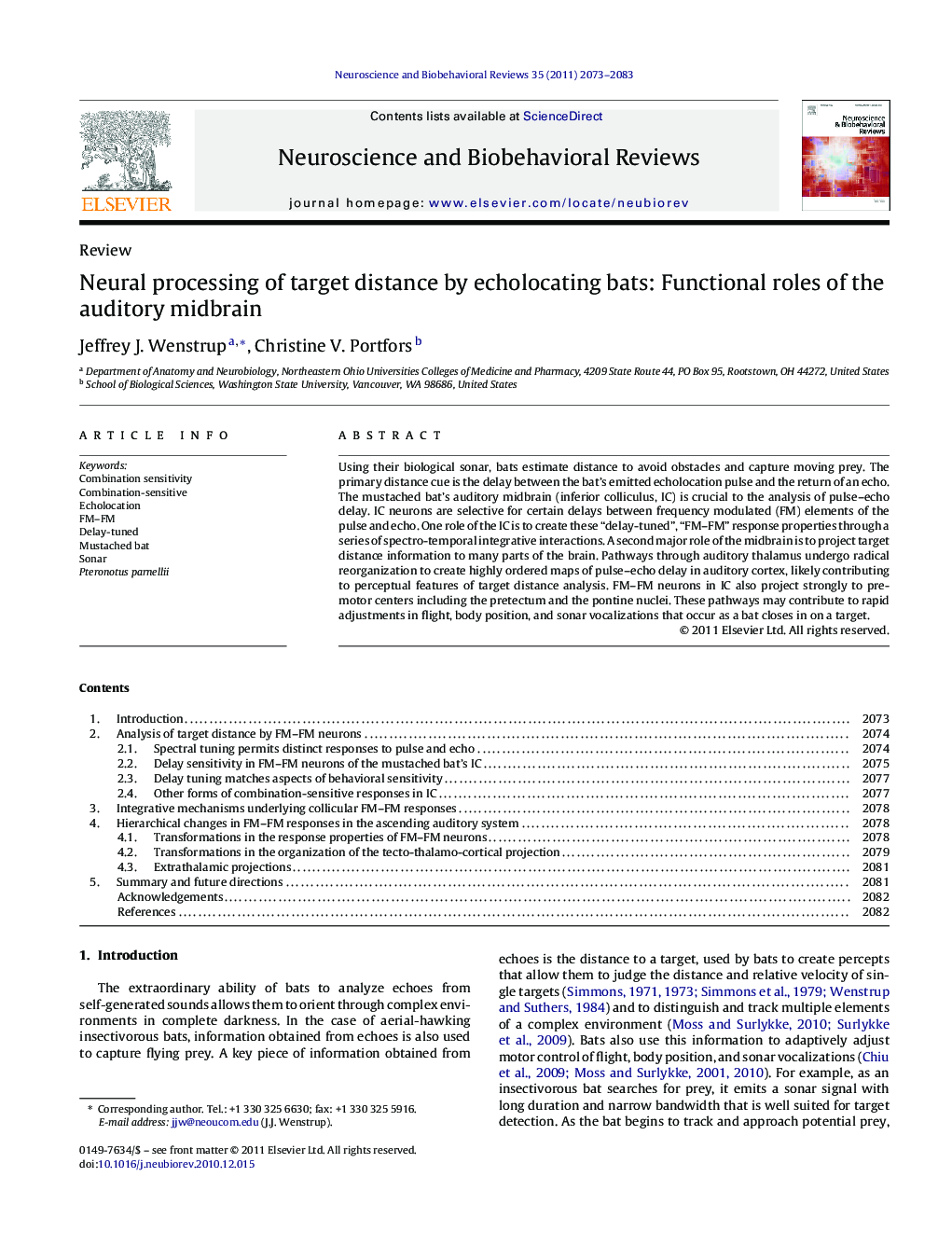| Article ID | Journal | Published Year | Pages | File Type |
|---|---|---|---|---|
| 10461527 | Neuroscience & Biobehavioral Reviews | 2011 | 11 Pages |
Abstract
Using their biological sonar, bats estimate distance to avoid obstacles and capture moving prey. The primary distance cue is the delay between the bat's emitted echolocation pulse and the return of an echo. The mustached bat's auditory midbrain (inferior colliculus, IC) is crucial to the analysis of pulse-echo delay. IC neurons are selective for certain delays between frequency modulated (FM) elements of the pulse and echo. One role of the IC is to create these “delay-tuned”, “FM-FM” response properties through a series of spectro-temporal integrative interactions. A second major role of the midbrain is to project target distance information to many parts of the brain. Pathways through auditory thalamus undergo radical reorganization to create highly ordered maps of pulse-echo delay in auditory cortex, likely contributing to perceptual features of target distance analysis. FM-FM neurons in IC also project strongly to pre-motor centers including the pretectum and the pontine nuclei. These pathways may contribute to rapid adjustments in flight, body position, and sonar vocalizations that occur as a bat closes in on a target.
Keywords
Related Topics
Life Sciences
Neuroscience
Behavioral Neuroscience
Authors
Jeffrey J. Wenstrup, Christine V. Portfors,
